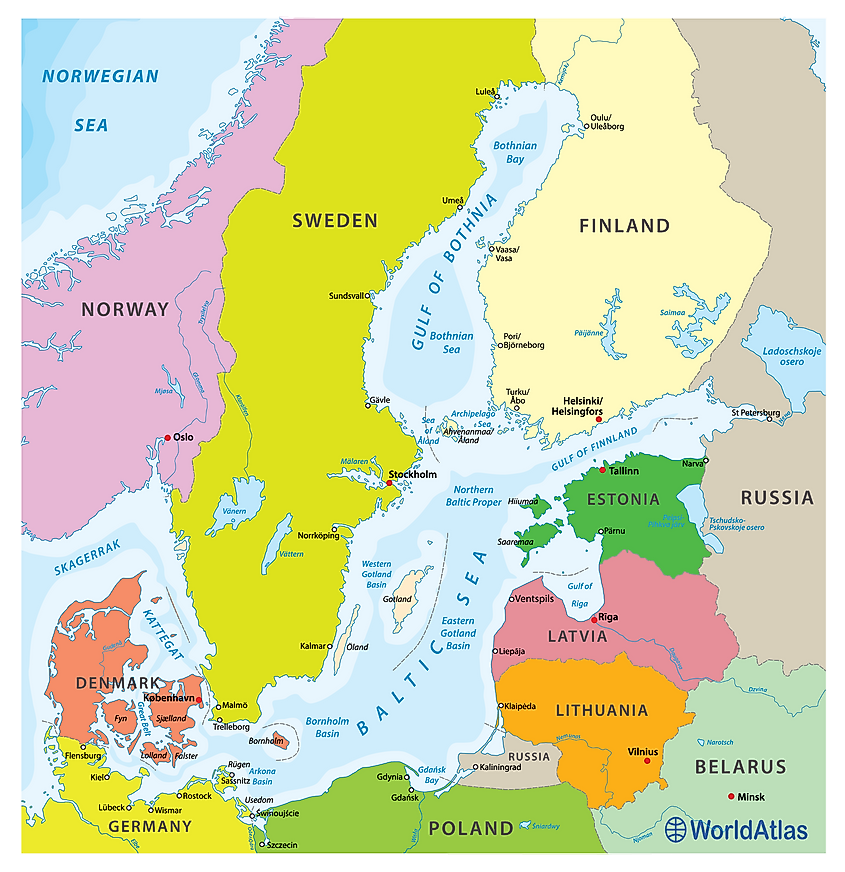Description

Disclaimer: Copyright infringement not intended.
Context
Scientists accidentally find a mysterious one-km-long wall in Baltic Sea.
Details
Baltic Sea
- The Baltic Sea is a semi-enclosed inland sea located in Northern Europe. Considered an arm of the Atlantic Ocean, it is connected to it via the Kattegat Strait, Skagerrak Strait, and the North Sea.
- It is enclosed by Denmark, Estonia, Finland, Germany, Latvia, Lithuania, Poland, Russia, Sweden, and the North and Central European Plain.
- The Baltic Sea is connected by artificial waterways to the White Sea via the White Sea–Baltic Canal and to the German Bight of the North Sea via the Kiel Canal.
Rivers Draining Into the Baltic Sea
|
River
|
States Sharing the Basin
|
|
Neva
|
Russia, Finland
|
|
Vistula
|
Poland (tributaries in Belarus, Ukraine, and Slovakia)
|
|
Daugava
|
Russia (source), Latvia
|
|
Neman
|
Belarus (source), Lithuania, Russia
|
|
Kemijoki
|
Finland, Norway
|
|
Oder
|
Czech Republic (source), Poland, Germany
|
|
Lule älv
|
Sweden
|
|
Narva
|
Russia, Estonia
|
|
Torne älv
|
Norway (source), Sweden, Finland
|
Geology
- The Baltic Sea is the second largest brackish water basin in the world in terms of water volume. It occupies a basin formed by glacial erosion and is a mixture of ocean water and fresh water brought by numerous rivers.
Sea Ice
- As a long-term average the Baltic Sea is ice covered for about 45 percent of its surface area at maximum annually. The ice-covered area during such a typical winter includes the Gulf of Bothnia, the Gulf of Finland, Gulf of Riga and Väinameri in the Estonian archipelago.
Island in Baltic Sea
- The Baltic Sea is home to over 20 islands and archipelagos. Gotland, located off the coast of Sweden, is the largest island in the Baltic Sea, covering approximately 2,994 km2.
Major shipyards
- Shipbuilding is also a major activity around the Baltic Sea. The largest shipyards are Gdynia, Gdansk, Malmo, Turku, Riga, and Saint Petersburg.

Recent news
- A Stone Age wall has been discovered beneath the Baltic sea in Germany believed to be the oldest megastructure built by humans in Europe, stretching nearly a kilometre along the seafloor.
- Comprising 1,673 individual stones, each too heavy for humans to move, the wall stands less than 1 m in height, extending over a distance of 971 m.
Stone Age wall natural or manmade
- Researchers believe the size and shape of the 971-meter wall make it unlikely to have formed through natural processes like a tsunami or glacial movement.
- Researchers propose that it was constructed over 10,000 years ago by hunter-gatherers on land near a lake or marsh. While the exact purpose is challenging to prove, scientists suspect the wall served as a hunting lane for reindeer herds.
|
PRACTICE QUESTION
Which of the following countries does not share coastline with Baltic Sea?
- Estonia
- Latvia
- Lithuania
- Belarus
Answer D
|











